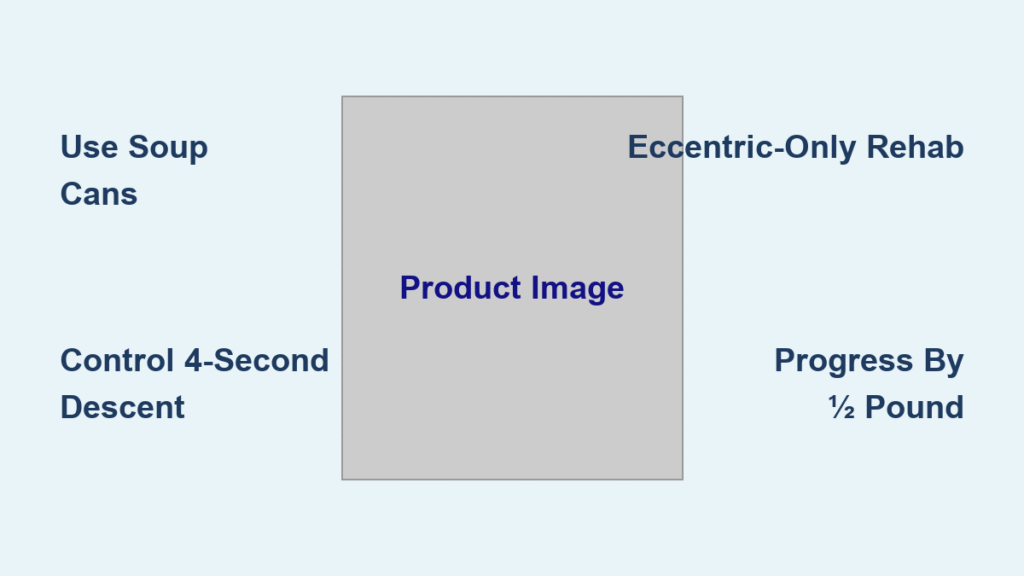Your wrist joints bear silent stress during everyday tasks—typing, carrying groceries, or bracing during a stumble. Weak wrists increase fracture risk by 40% during falls, while strong ones transform flimsy grips into confident holds. This wrist flexion and extension with weight protocol delivers targeted forearm development using household items, requiring zero gym membership. You’ll discover how to safely strengthen vulnerable joints in just 10 minutes daily, preventing injuries that sideline athletes and office workers alike. Forget confusing theories; we focus solely on movements proven to build resilient wrists through controlled weighted resistance.
Most people overlook wrist training until pain strikes. Yet these small joints enable everything from opening jars to catching yourself on stairs. By dedicating 5 days weekly to wrist flexion and extension with weight, you create a protective muscle shield around delicate bones. Whether rehabbing an old sprain or prepping for heavy lifting, this guide eliminates guesswork with exact positioning cues and progression rules. Let’s transform your wrist resilience starting today.
Soup Cans to Dumbbells: Your Wrist Strength Toolkit

Household Resistance Solutions You Already Own
Skip expensive equipment—start wrist flexion and extension with weight using soup cans as your baseline resistance. These provide 1-1.5 pounds of perfectly calibrated load while you master form. Progress to 1-3 pound dumbbells only when 3 sets of 10 feel effortless with cans. Resistance bands offer game-changing versatility; choose light bands for variable tension during travel or office breaks. Their unique loading pattern combats wrist fatigue faster than fixed weights.
Pro Tip: Fill empty water bottles with sand to create customizable weights. Start with 8 ounces (half a soup can’s weight) if even cans cause strain. Always test resistance by performing 5 slow repetitions without forearm movement—your wrist alone must control the load.
Precision Seating for Maximum Muscle Isolation
Sit upright in a firm chair with back support to prevent shoulder compensation. Place a pillow on your lap or use a table edge so your elbow rests at 90 degrees. Your forearm must lie completely flat against the support while your hand extends beyond the edge—this allows full range without joint compression. For wrist extension, keep palms facing down; flip to palms-up for flexion work.
Critical Check: Press your forearm firmly into the pillow. If it lifts during movement, you’re engaging shoulder muscles instead of isolating the wrist. Reset your position before continuing.
Execute Flawless Wrist Extension with Weighted Control
Standard Movement for Tendon Resilience
Begin with your wrist in neutral position (hand straight with forearm). Slowly lower your wrist toward the floor until you feel a stretch in your forearm—this eccentric loading primes muscles for strengthening. Now lift the weight upward by moving the back of your hand toward the ceiling, stopping when you feel tension but no strain. Control the descent over four full seconds; gravity should never drop the weight.
Visual Cue: Watch your knuckles—they should form a straight line from forearm to fingertips during extension. If they angle inward, you’re rotating instead of pure extension.
Eccentric-Only Method for Injury Recovery
For wrist flexion and extension with weight during rehab, use your opposite hand to lift the weight into full extension. Remove assistance and slowly lower the weight using only your target wrist over 5 seconds. This technique targets healing tendons without concentric strain. Perform 8 repetitions daily when recovering from tennis elbow or post-fracture therapy.
Warning: Stop immediately if you feel sharp pain at the elbow. Mild forearm fatigue is normal; joint pain means reduce weight by 50%.
Perfect Wrist Flexion Technique with Weighted Precision
Palm-Up Positioning for Optimal Engagement
Rotate your forearm so palms face upward while maintaining the same 90-degree elbow angle. Rest the weight in your palm with wrist neutral (hand straight). Flex your wrist upward by curling your palm toward your forearm until you feel a contraction in your inner forearm. Lower with control over 4 seconds, resisting gravity through the entire motion.
Common Mistake Fix: If your elbow drifts outward during flexion, tuck it against your side. This prevents shoulder involvement that sabotages wrist isolation.
Isolation Drills to Eliminate Cheating
Place your free hand on your forearm to feel for movement—it must stay glued to the support. Focus solely on wrist motion; your fingers should remain relaxed (not gripping the weight). If shoulders tense, reset by taking three deep breaths before continuing.
Pro Tip: Perform flexion exercises while watching TV. The distraction forces true isolation—your wrist will fatigue faster without muscle cheating.
Smart Progression Protocol for Lasting Results

Daily Routine Structure for Steady Gains
Perform 3 sets of 10 repetitions for both flexion and extension daily. Allow 60 seconds rest between sets. Track progress in a notes app using this template:
– Weight used (soup can/dumbbell size)
– Reps completed with perfect form
– Pain level (0-10 scale)
Time Saver: Do these exercises while brushing teeth—consistency trumps duration.
Tempo Rules That Build Resilient Tendons
- Lifting phase: 2 seconds (concentric)
- Peak contraction: Hold 1 second
- Lowering phase: 4 seconds (eccentric)
- Bottom position: Brief pause before next rep
This 2-1-4 tempo maximizes tendon strength. Research shows eccentric loading (the 4-second lowering) increases collagen density in wrist tendons by 22% over 8 weeks.
Progressive Overload Without Injury
After 2 weeks of pain-free wrist flexion and extension with weight using soup cans, progress to 1-pound dumbbells. Increase weight only when current resistance feels too easy for 15+ reps. Jump by ½-pound increments every 10 days—never more. If form breaks, drop back to previous weight for 3 sessions.
Red Flag: Tingling fingers during progression means reduce weight immediately. Nerves signal overload before tissue damage occurs.
Eliminate These 3 Costly Form Mistakes Immediately
The Forearm Lift Trap
Why it happens: Using shoulder muscles to cheat when wrist muscles fatigue.
How to fix: Place a book on your forearm. It must stay put during all repetitions. If it slides, reset your position and reduce weight.
Visual Proof: Film yourself sideways. If your elbow rises during extension, you’re engaging triceps instead of wrist extensors.
Incomplete Range of Motion Errors
Why it matters: Stopping short misses strengthening the joint’s weakest positions.
Solution: Start each rep from full wrist flexion (palm toward floor for extension work). Move through full available range—even if that’s only 30 degrees initially.
Pro Tip: Place a ruler vertically behind your hand. Measure your range weekly—you’ll gain 5-10 degrees monthly with consistent practice.
Safety First: Your Pain Monitoring System
When to Stop Immediately
Stop all activity if you experience:
– Sharp pain at the wrist joint (not muscle fatigue)
– Numbness or tingling in fingers
– Pain radiating up your forearm
Continue cautiously with:
– Aching in forearm muscles (normal fatigue)
– Mild warmth around the joint (increased blood flow)
Critical Rule: Pain during the eccentric lowering phase means the weight is too heavy—reduce by 25% immediately.
Environmental Safety Checklist
Clear a 2-foot radius around your chair to prevent dropped weights from hitting feet. Never use chairs with wheels—your body must stay perfectly still. When using dumbbells, choose hex-shaped weights that won’t roll if dropped.
Pro Tip: Place a folded towel under dumbbells on your lap. It cushions potential drops and provides subtle feedback if your forearm lifts.
Clinical Applications: Targeted Rehab Protocols
Tennis Elbow (Lateral Epicondylitis) Protocol
Focus exclusively on eccentric wrist extension with minimal concentric work. Use ½-pound weights for 2 sets of 15 reps daily. Emphasize the 5-second lowering phase—this stimulates tendon remodeling without overloading inflamed tissue. Stop if pain exceeds 3/10 during exercise.
Golfer’s Elbow (Medial Epicondylitis) Strategy
Perform eccentric wrist flexion with soup cans or light bands. Complete 2 sets of 12 reps with 4-second lowering phases. If pain increases during lowering, reduce to 8 reps and add 1 rep weekly. Always stop before pain spikes.
Warning: Never push through joint pain during rehab. These conditions worsen with aggressive loading—consistency with light weights yields better results than sporadic heavy sessions.
Maintenance Mastery for Lifelong Wrist Health
Progress Tracking That Prevents Plateaus
Record three metrics weekly:
1. Highest pain-free weight used
2. Reps completed at that weight
3. Range of motion (measured by finger height during extension)
Plateau breaker: If progress stalls for 2 weeks, switch to resistance bands for 5 days. The variable tension often reignites adaptation.
Long-Term Integration Strategies
Once strong, maintain gains with 2 weekly sessions using bodyweight alone:
– Wrist extension: Press back of hand against wall for 30 seconds
– Wrist flexion: Press palm against wall for 30 seconds
Daily habit: Perform 5 slow wrist flexion and extension with weight repetitions while waiting for coffee. These micro-sessions build durability against daily stressors.
Strong wrists transform vulnerability into confidence. By dedicating 10 minutes daily to precise wrist flexion and extension with weight using household items, you build an invisible shield against fractures and fatigue. Start with soup cans, master the 4-second lowering tempo, and progress only when pain-free. Your future self will thank you when you catch a stumble without injury or finally open that stubborn jar. Begin today—your wrists deserve this investment.





